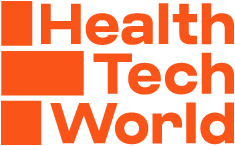
The efficient flow of patient records is integral to the NHS ecosystem. Files are constantly in circulation between hospital wards, clinics and offices, as patients attend appointments, medical staff make clinical decisions and secretaries type up notes.
But the physical nature of patient records brings problems. Documents can be mislaid in transit, misfiled or just degrade over time. It’s easy to see how any of these occurrences could have repercussions for both staff and patients.
The problems have been further compounded during the Covid pandemic.
Digital health records are helping to reduce face-to-face contact to protect patients and staff, minimise the risk of Covid-19 infection, and provide practioners the ability to access patient information anywhere without compromising the integrity of care provided.
CCube Solutions has been working in the NHS secondary care sector for more than two decades. The independent UK SME has a proven track record of working with the NHS to make this flow of information faster, more secure and more reliable.
The award-winning CCube EDRM software utilises the latest technologies to securely capture, store and deliver electronic health records whenever and wherever they are needed, in whichever format is required.
The CCube EDRM currently holds and manages some 450 million documents for 33 million patients across 30 NHS organisations.
The process has a huge impact on efficiency.
Appointments can run more smoothly, meaning more patients can be seen throughout the day. Meanwhile, less paper means less space taken up by shelf, cabinet and trolly storage, freeing up room for both staff and in-demand beds.
Hospitals across the UK have reaped the financial benefits, too.
In 2009, CCube began working with St Helens & Knowsley Teaching Hospitals NHS Trust to digitise its records.
More than 52 million pages of medical documents were digitised, with 7,000 documents no longer being hand-delivered each week.
By the end of the project, the trust had become the first in the UK to stop using paper records in clinical practice, achieving £1.4m annual savings from a £1.2m investment.
CCube’s EDRM can also be embedded within other digital patient record systems, such as Cerner’s Millennium.
At Milton Keynes University Hospital NHS Foundation Trust, 3,800 staff can access legacy patient records contained in the CCube system but view them from within Millennium.
Clinicians now just press the EDRM tab within the Millennium menu and the viewer immediately displays CCube’s patient record.
Craig York, Milton Keynes University Hospital’s chief technology officer, said:
“It is the ‘in context’ aspect of this workflow project which is of significance.
“We don’t require clinicians to open up a new Internet Explorer window to do this which is another way the integration could have been done.
“But they’d then have multiple screens open and it could become distracting and confusing for staff about which patient file they’re actually in which we obviously didn’t want.”
Debbie Phillips, Milton Keynes University Hospital’s CCIO and consultant surgeon, added:
“The importance of opportunities to save clinical time within a digital system can’t be underestimated given the number of patients we have to treat.”
CCube has made its mark in NHS primary care too, where the pandemic has caused a sea change in how GP surgeries operate.
March 2021 saw a record number of telephone appointments: 11.4 million compared to 6.6 million in March 2020 and 3.5 million in March 2019.
But while GPs may be taking fewer face-to-face appointments, surgeries remain under considerable strain, with Covid numbers starting to rise once more.
Fluctuating staff numbers and increasing reliance on phone appointments mean GPs are more reliant on access to patient records than ever before.
CCube’s eLG solution securely hosts electronic Lloyd George records. The NHS stopped producing these paper documents in January 2021.
A typical NHS practice could hold a million or more sheets of paper. But since the initial NHS launch, eLG now hosts 2.5million records, accessed by 100 GP practices across the UK.
Upload to the secure storage platform is free and fully automated, once again saving money and boosting efficiency.
For example, a physical medical record is usually handled 12-18 times before, during and after a consultation
Digital technologies can help to:
- Minimise handling of physical notes and records and ensure that patient information is available at the point of need;
- Support remote consultations and Virtual Clinics – seen as crucial for reducing unnecessary outpatient visits, saving time and money for patients and the health service;
- Ensure that delivery of care to non-Covid patients can continue, to help avoid issues in the future and minimise revenue losses.
This in excerpt from our Special Report: Working Smarter in a Post-Covid World





